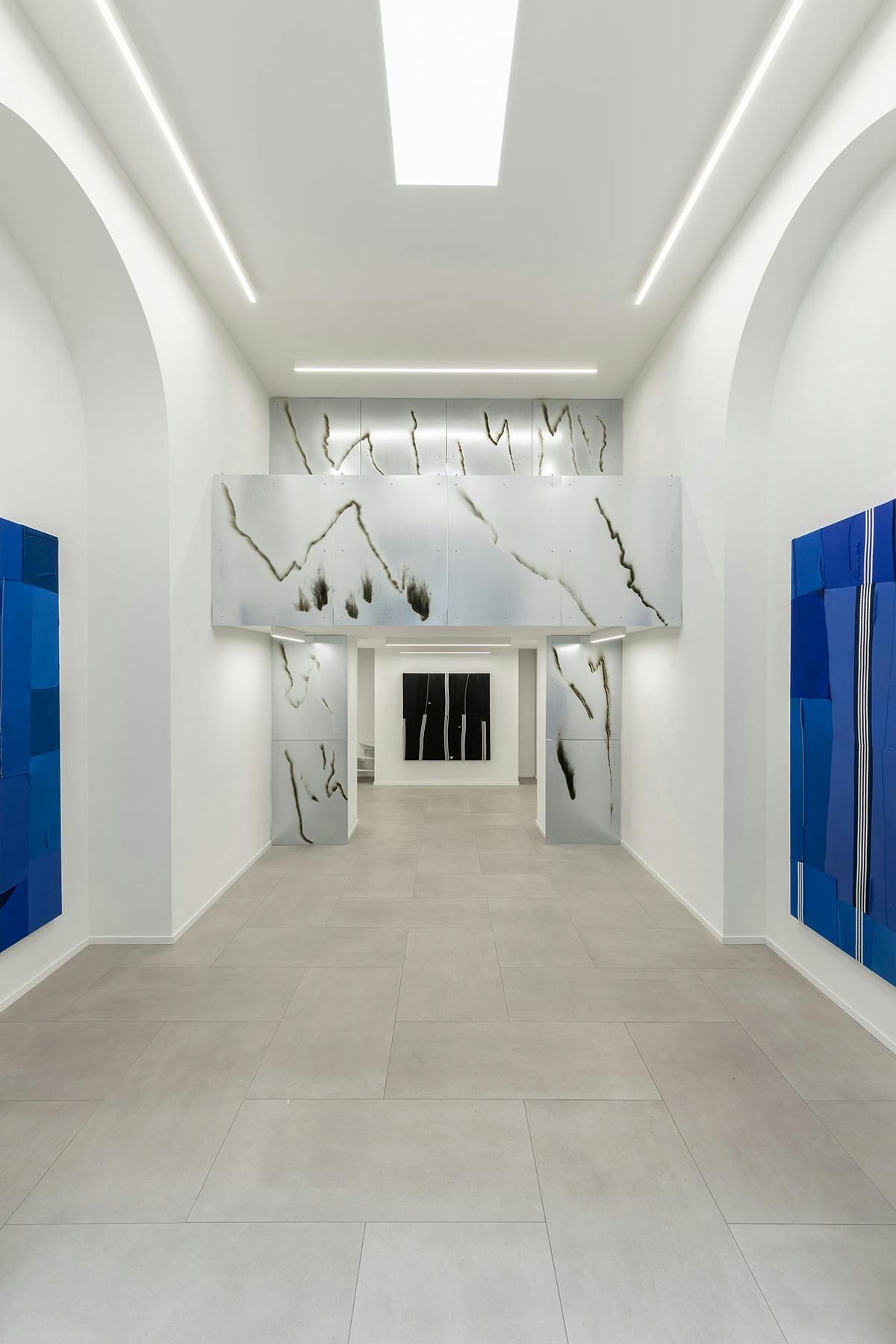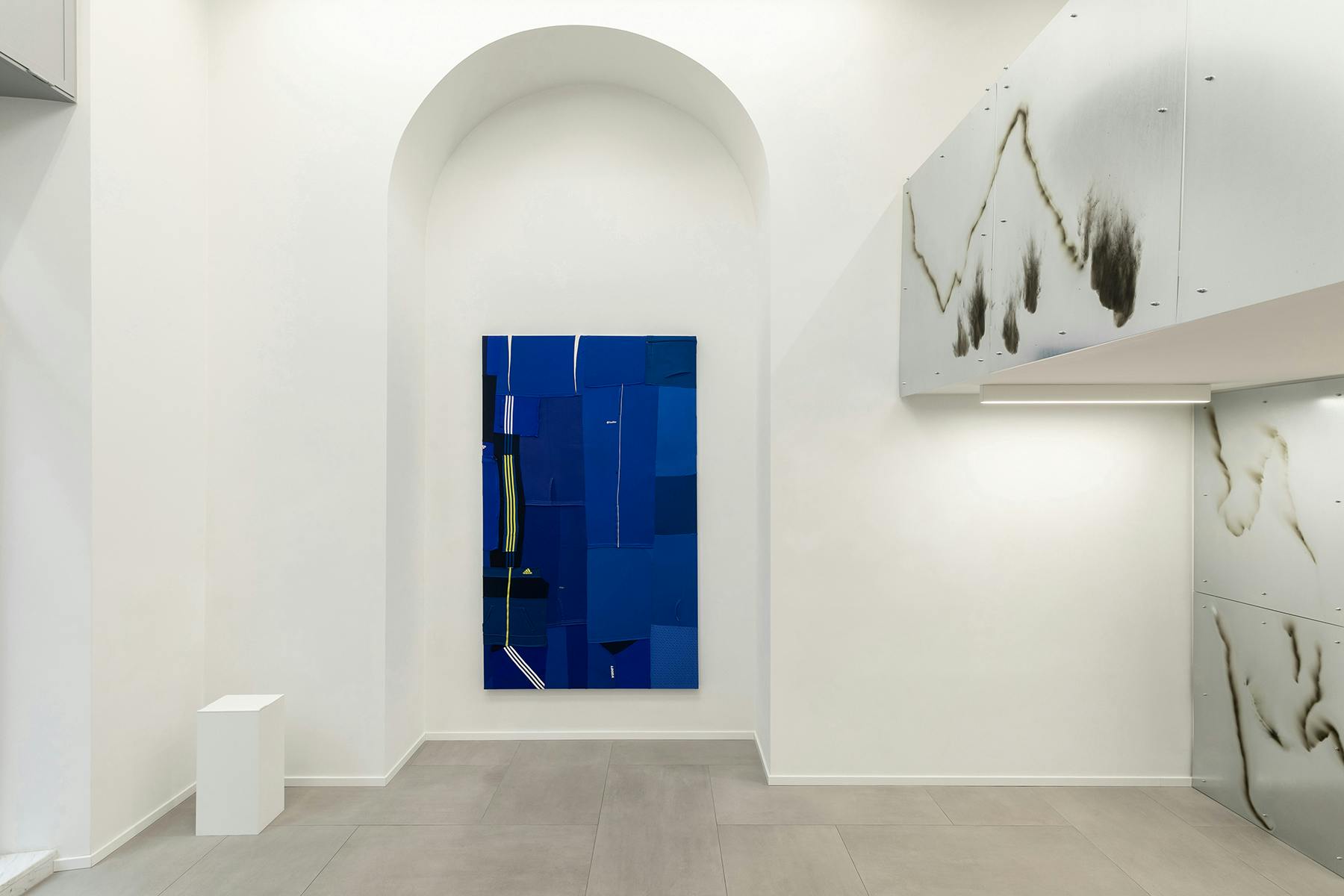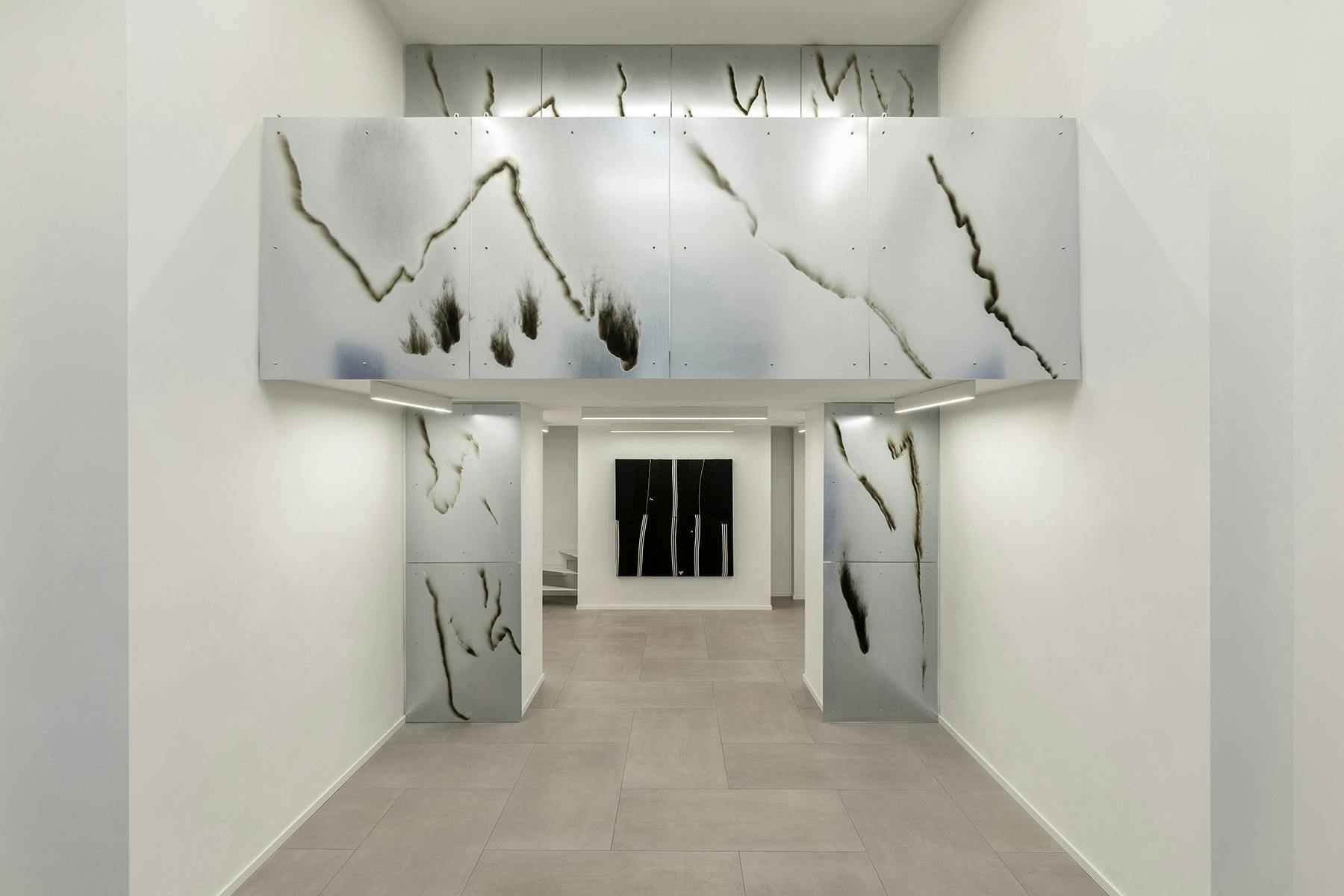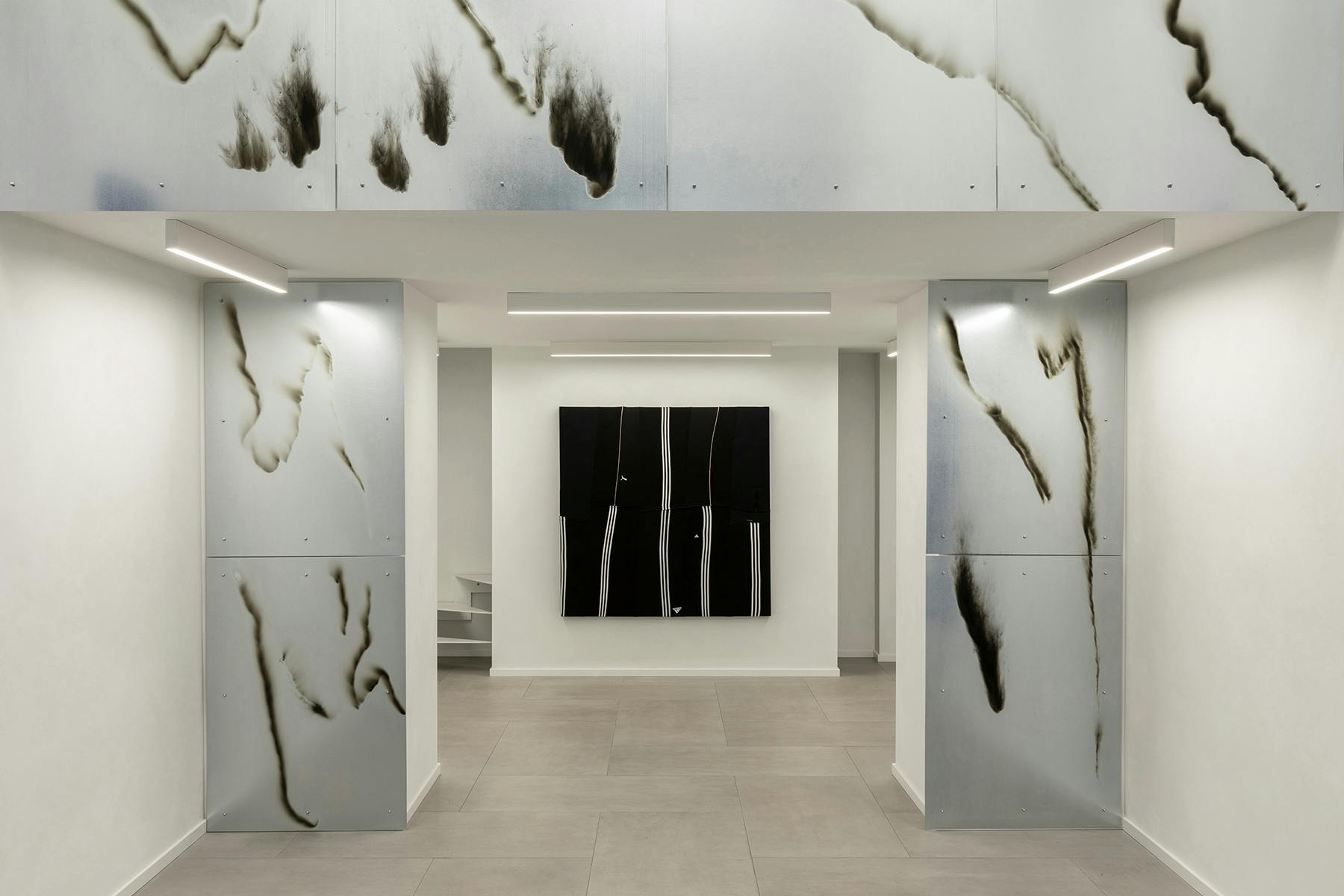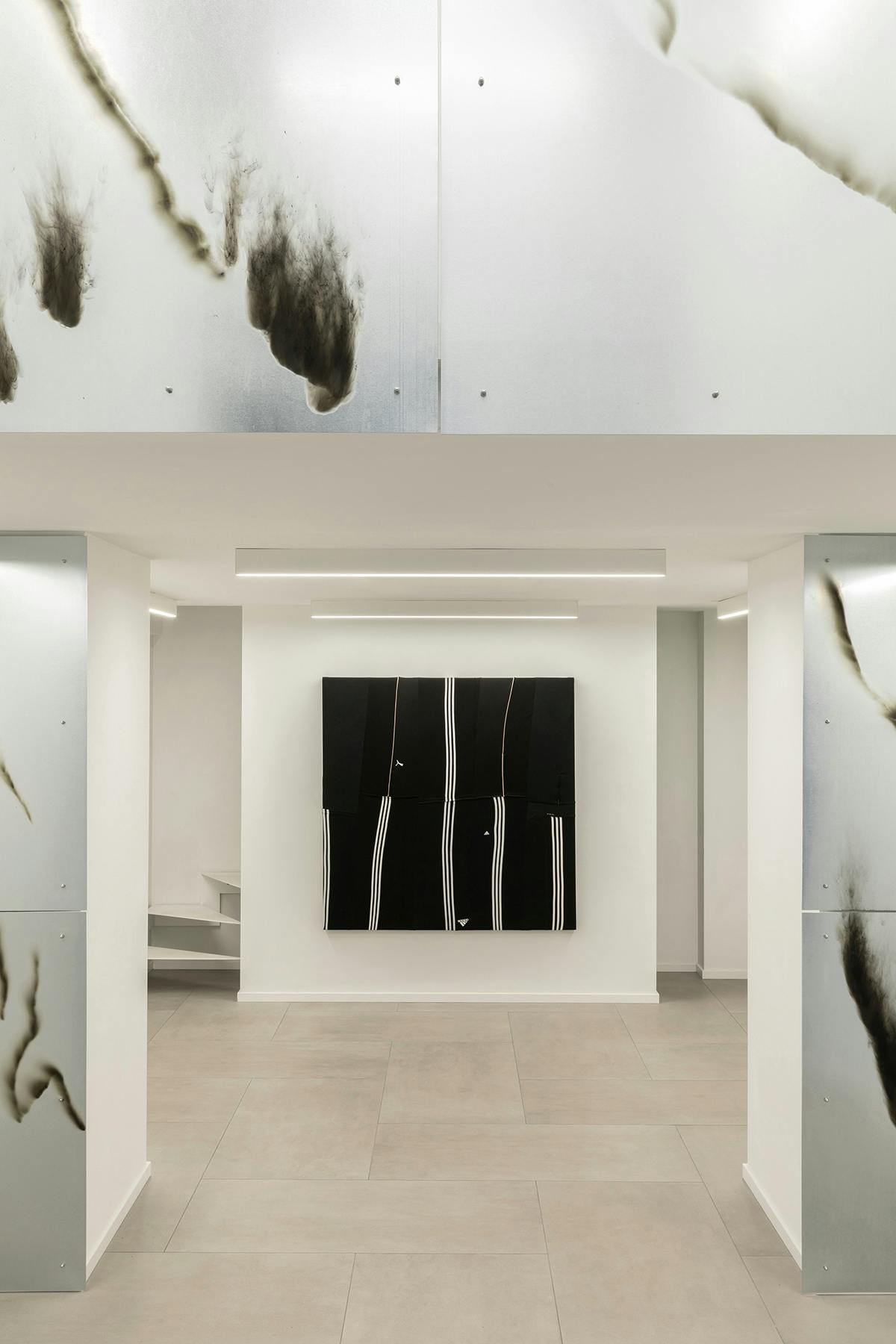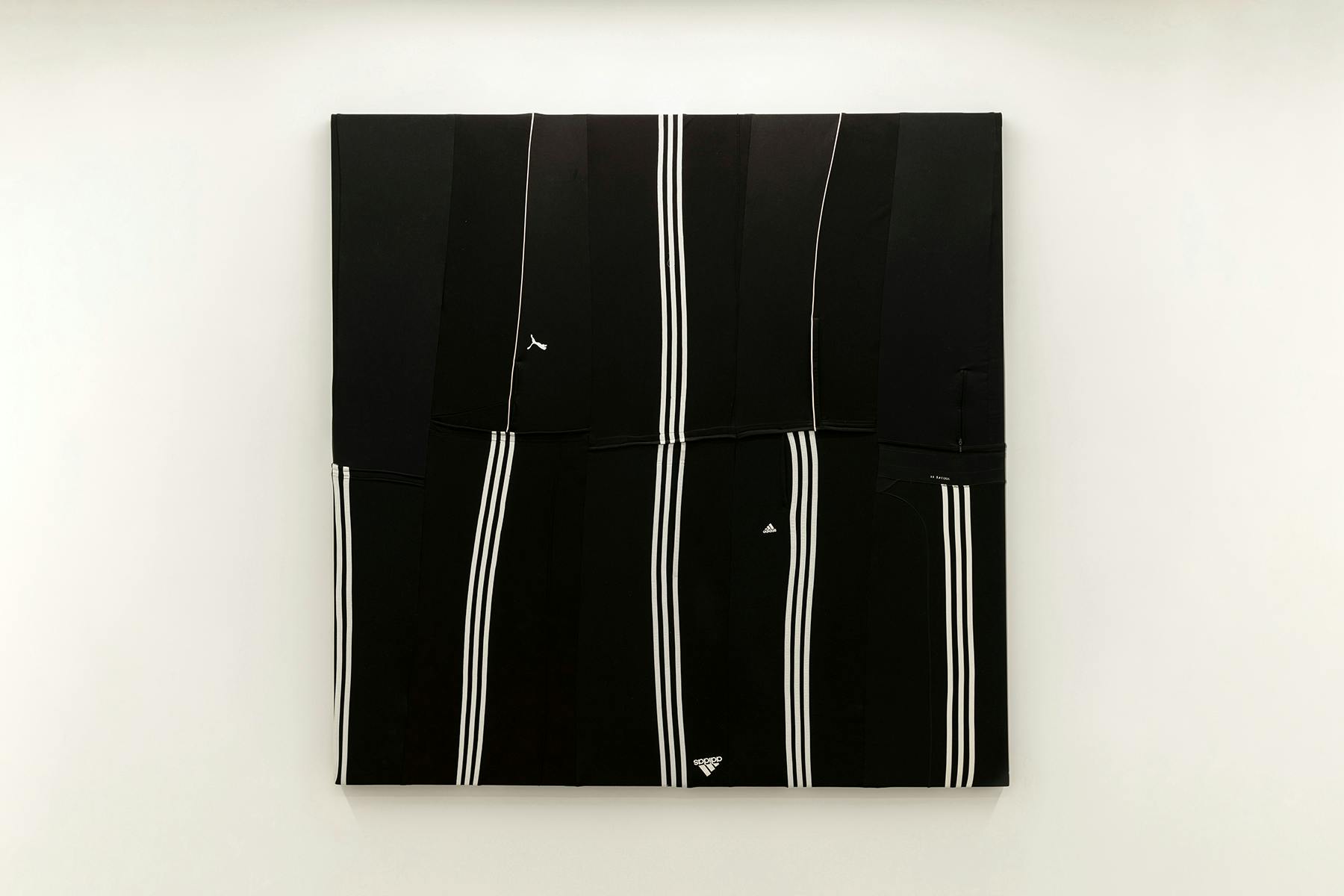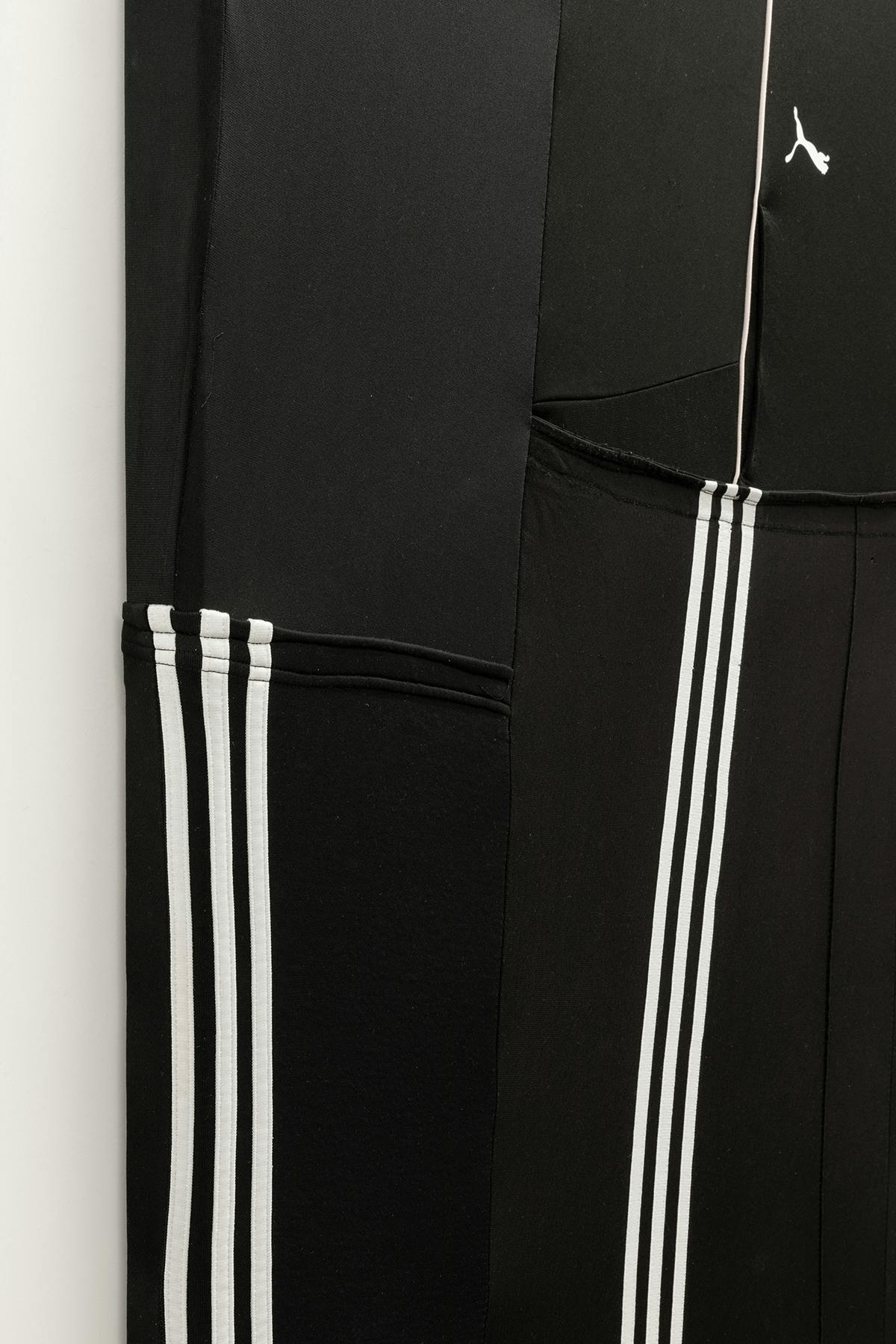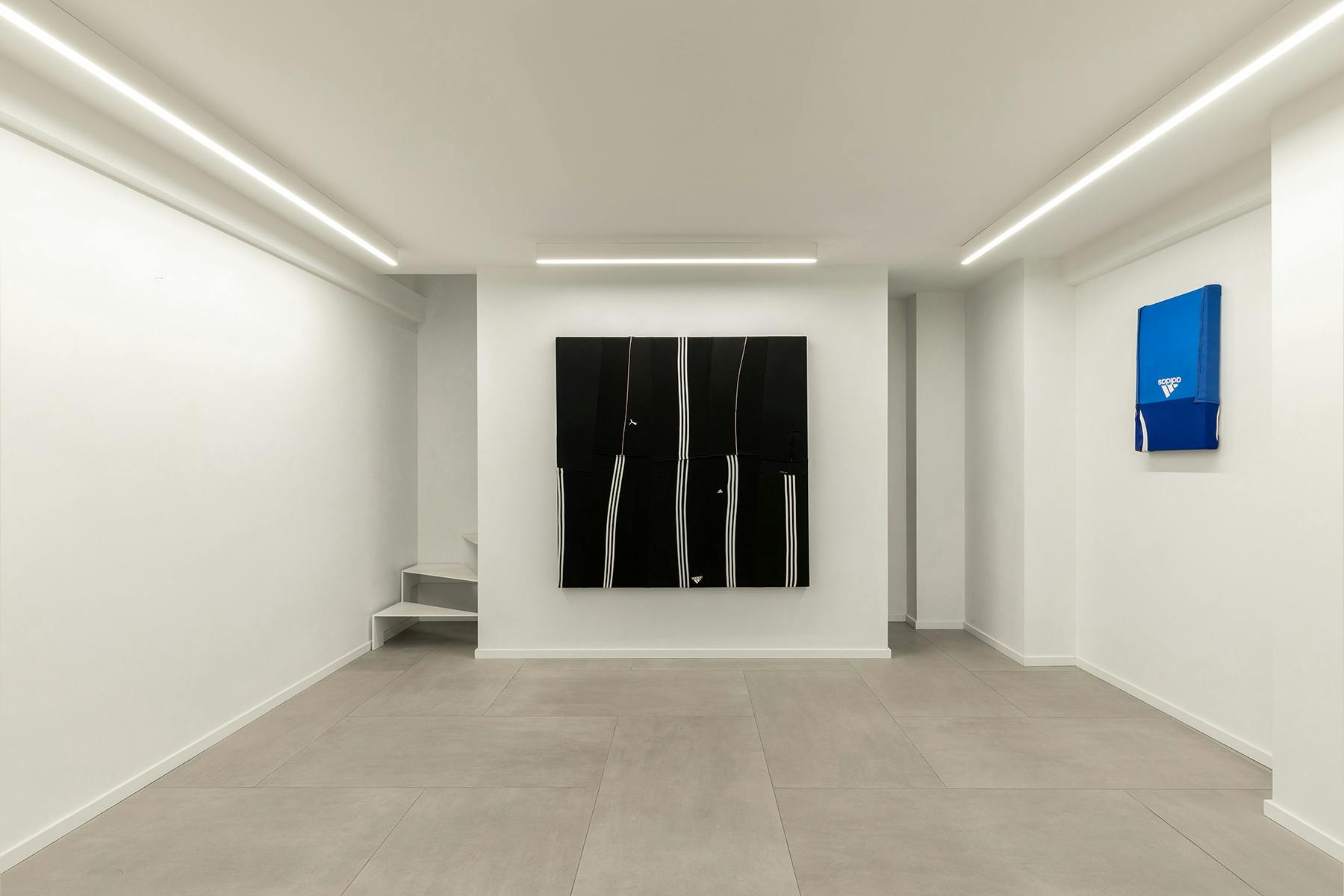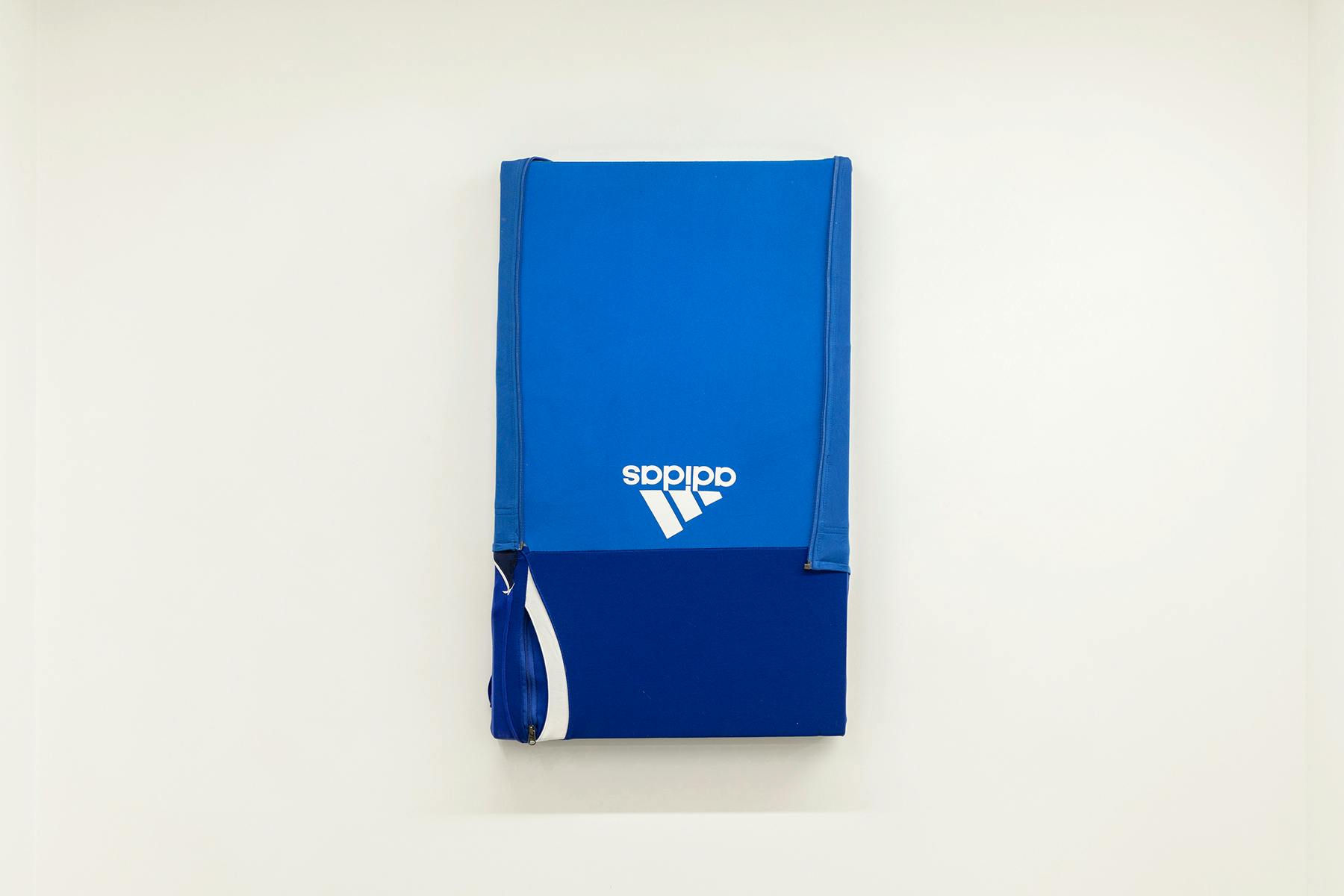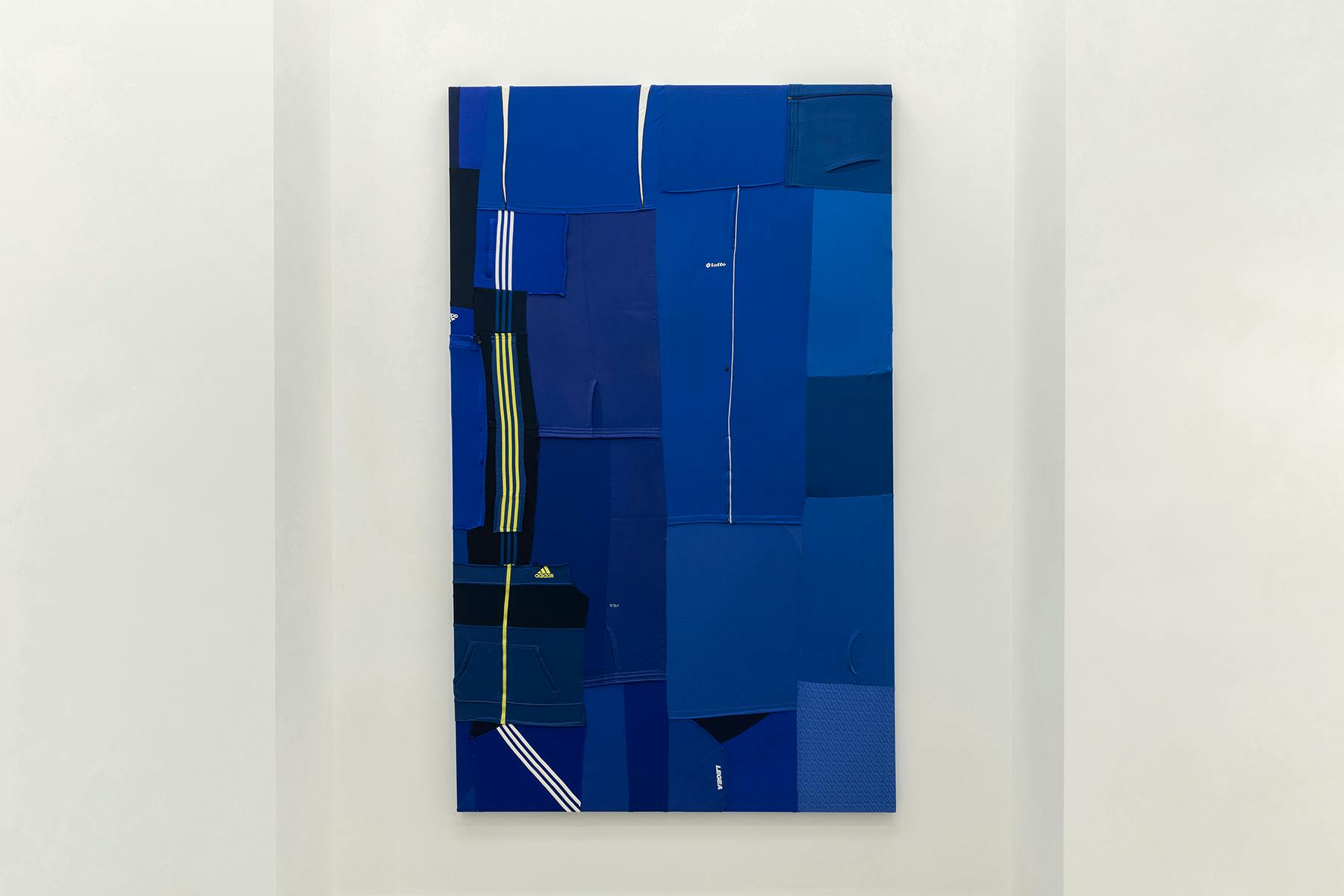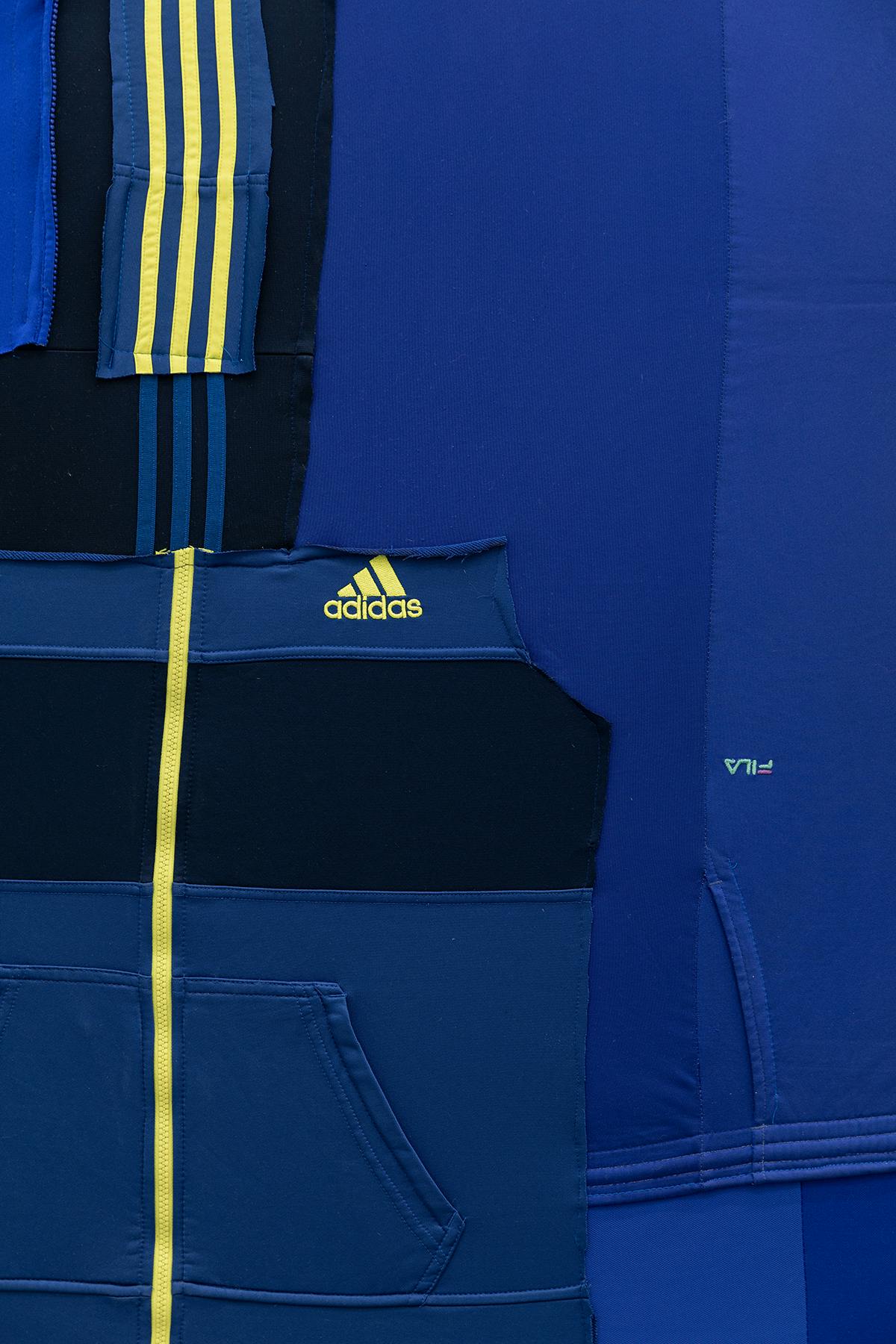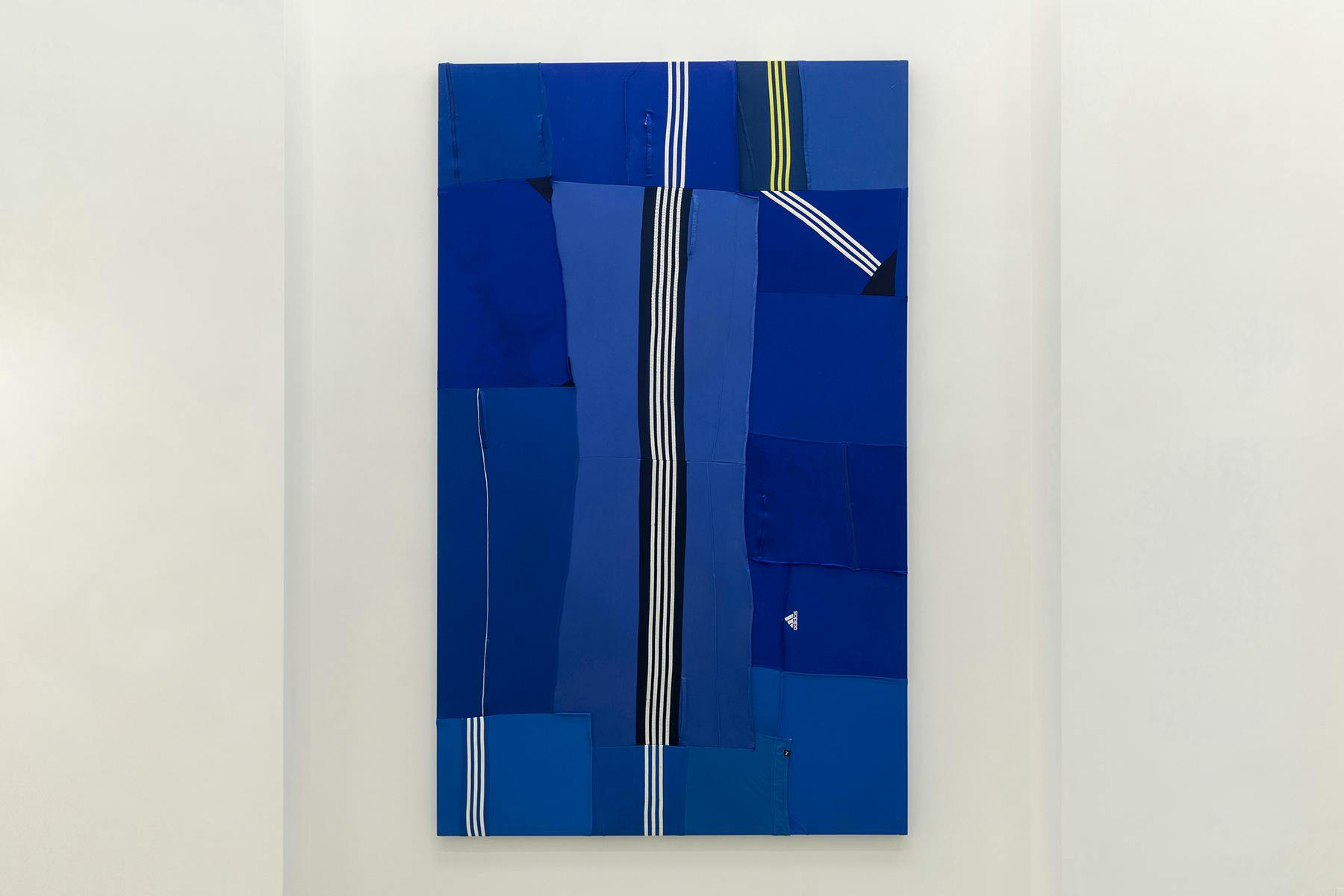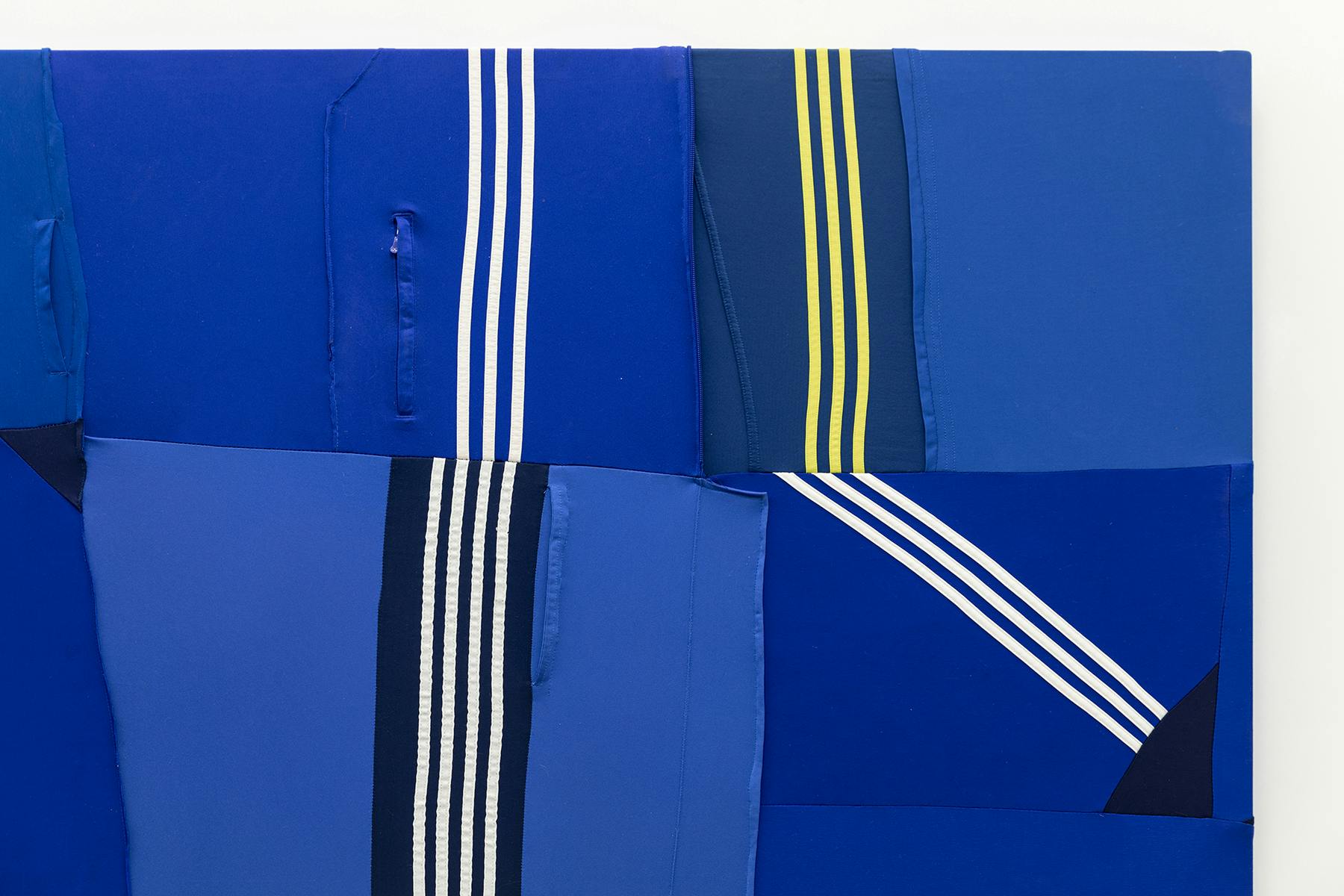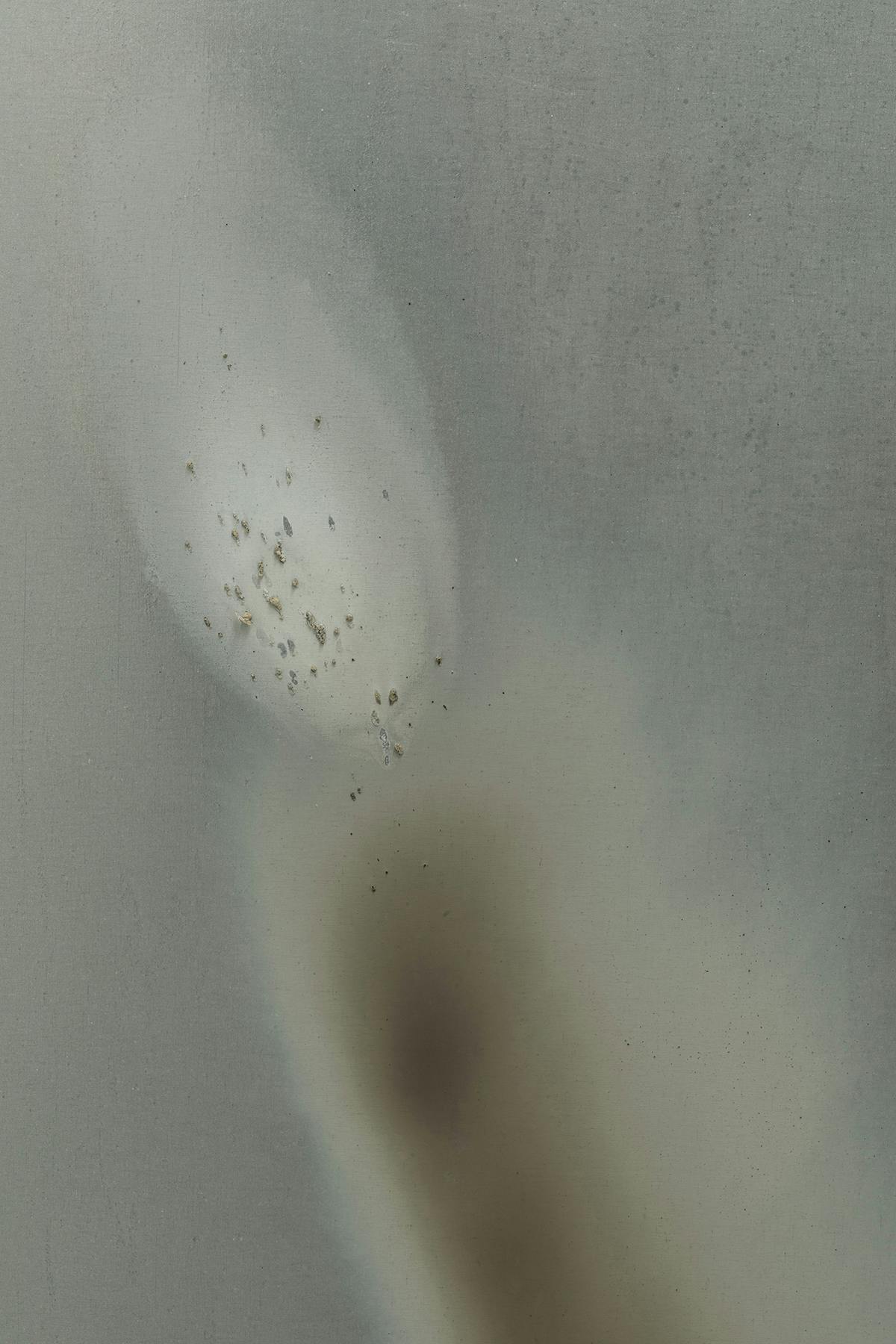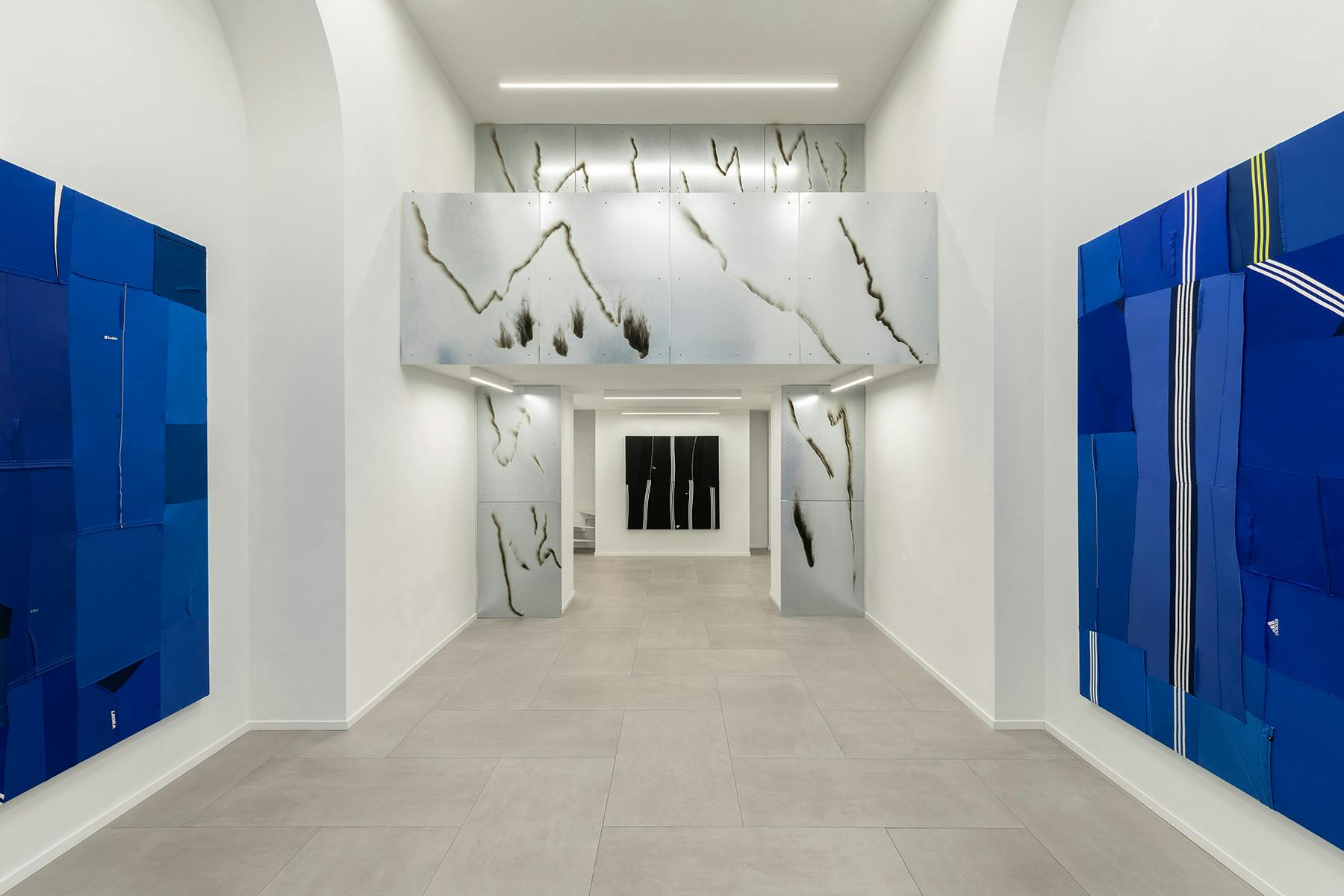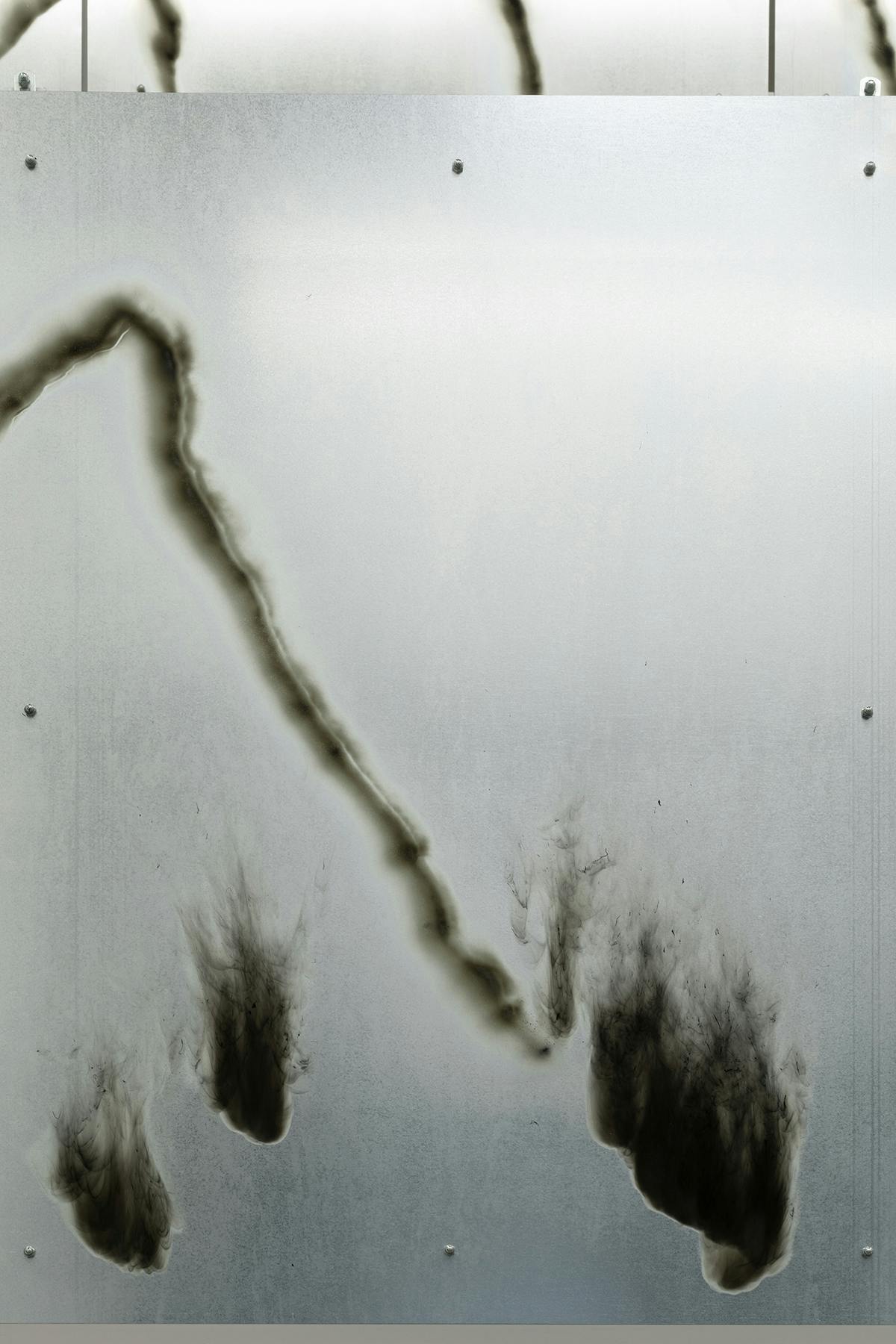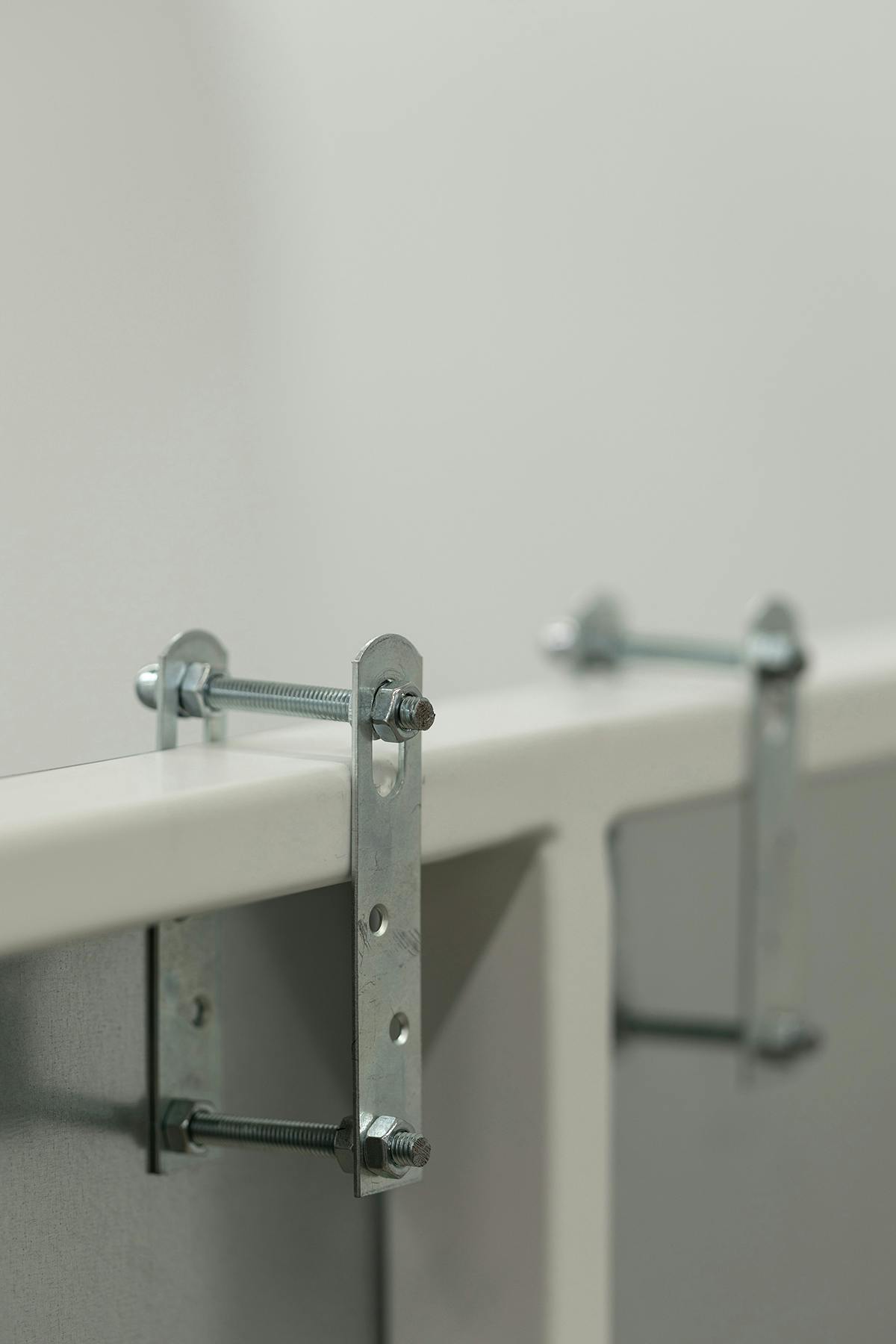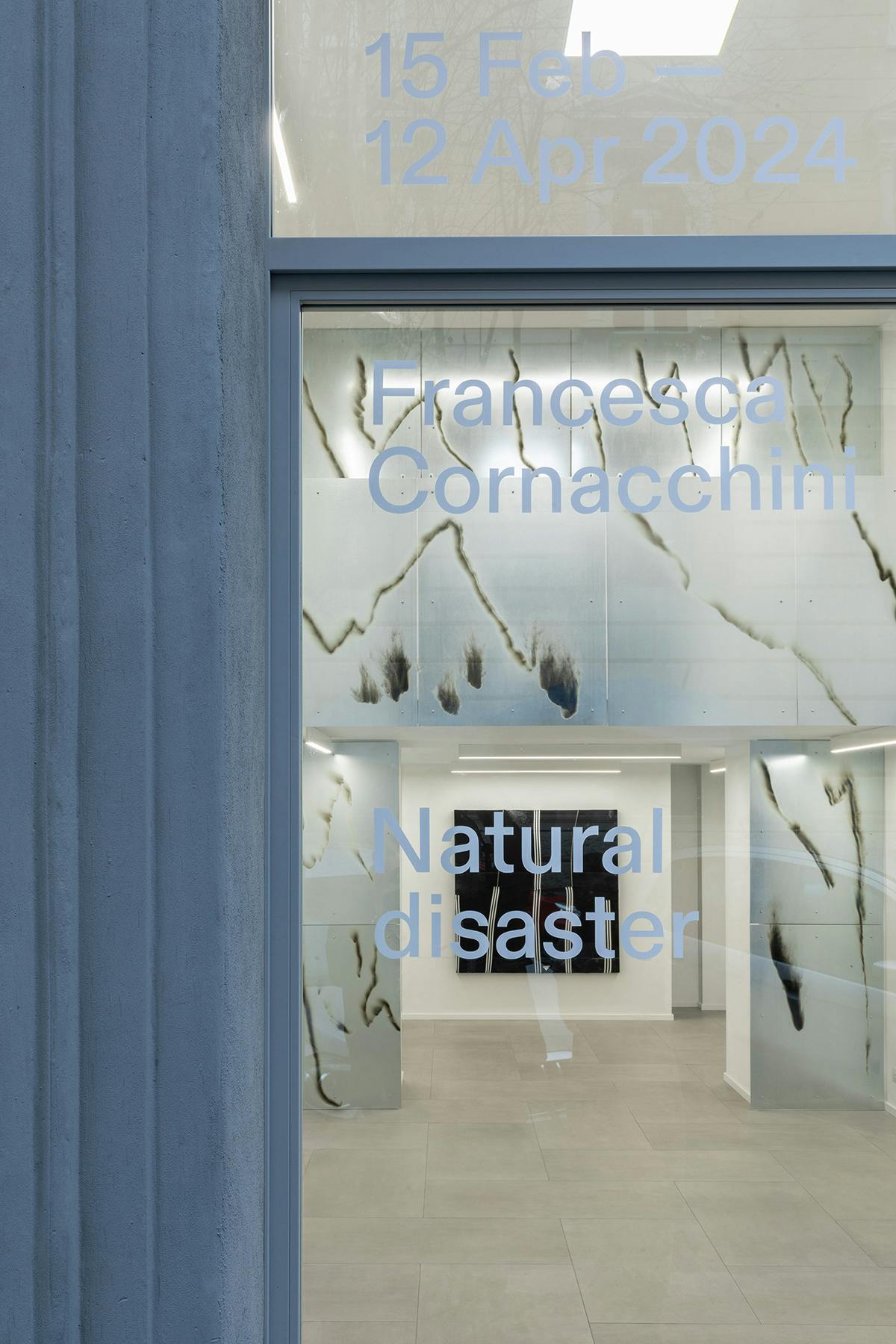Text by Giulia Gaibisso.
Natural disaster, Francesca Cornacchini's first solo exhibition at the Divario gallery, embodies the silence at the ceasing of the battle, the calm after the storm, the equilibrium re-established following the passage of a force, both entropic and generative, capable of producing sublime visions.
Destruction, evoked by the title of the exhibition, supports its interpretation in a romantic key – starting from a philosophical position that traces in Nature and her phenomena the manifestation of a power so grandiose that it generates a feeling of devotion and terror, fear and ecstasy.
Viewable as a corpus, the works seem to delineate a landscape whose profiles are endowed with ambiguity, an ambivalence in the rendering that allows them to be read both as stylisations of atmospheric events (from fire to storm) and as residues of a gesture that evokes an act of vandalism.
From this scenario, composed of burnt, blackened, cut-and-stitched surfaces, a unitary vision emerges, revealing a formal resolution achieved through a process of disintegration and subsequent reconstruction. By assembling portions of fabric and metal sheets, the artist traces a route, <<a path through chaos>> (Barnett Newman, “L’immagine plasmica”, in Il sublime, adesso, Abscondita Milano, 2010, p. 14.), without, however, attempting to depotentiate the work nor to diminish its effects, instead transfiguring its aesthetic qualities.
Time stops running and space crystallises in the form of a cathedral consecrated to the strike of lightning and the fire of the explosion, to the destructive charge of the former and the revolutionary impetus of the latter. The walls of the gallery are clothed in a kind of armour that alters their perception while emphasising their structural elements. The works, placed in defined areas or delimited by pillars and arcades, reorganise the space by adhering to a principle that is not only architectural but also, and above all, symbolic.
Dominating the space from above is Incendio: allegoria del fuoco, the large installation of galvanized iron modules traversed by veins produced by the passage of a smoke grenade. Its orientation, frontal with respect to the entrance and cross-cutting the entire space, allows its possible assimilation to a triumphal arch that establishes, and simultaneously delimits, a sacred space at the base of which is Il Sole (rising sun 1), a work elected as the perspective centre of the exhibition.
Conceived in the form of patchwork, the latter is made up of pieces of sweatshirts and acetate trousers sewn together to delineate a dark horizon, a landscape “illuminated” by logos, stripes and zips that, spreading from one end of the canvas to the other, vertically direct the gaze. Arranged on a monochrome background, the signs shine like lightning bolts, illuminating both their immediate surroundings and the entire exhibition space: it is therefore no coincidence that they are repeated in We are machine made for dreaming_paesaggio con fulmini 1 and We are machine made for dreaming_paesaggio con fulmini 2, the two monumental paintings positioned at the sides of the entrance to simulate openings cut in the curtain wall.
The spatial organisation derived from the placement of the works as well as the selection of the materials that compose them are also decisive in the creation of a temporal short-circuit, recurrent in Cornacchini's artistic practice, which interweaves past, present and future. In the inevitable paradox, the lighting of the smoke becomes tantamount to the lightning bolt that terrifies and fascinates mankind, and synonymous with a sunbeam filtering through the stained glass windows of a church; the brutalism of the geometries coexists with the rigour of the sacred space and the impersonality of the gallery, while the Absolute, evoked and “enclosed” in the entire exhibition project, is substantiated in the immanence of the subculture, here represented by the acetate sweatshirt and the smoke grenade, iconographic attributes of a contemporary chivalry emerging from the ashes of a rave.
In an eternal return, the sound of thunder gives way to the emptiness that anticipates and precedes it. Armour is laid aside and silence floods the space.
divario
